The commercial capital and largest city of Sri Lanka ” Colombo ” – By Malsha – eLanka
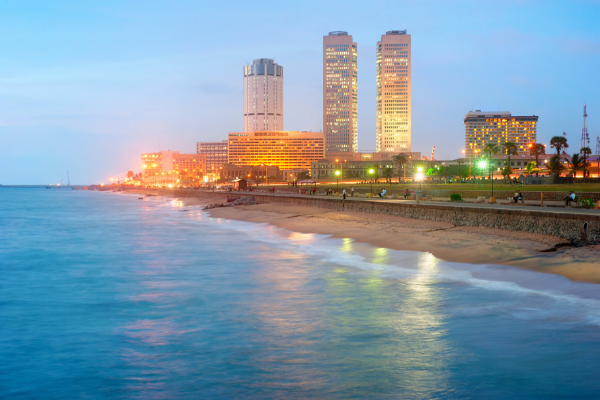
Colombo is the commercial capital and largest city of Sri Lanka, located on the west coast of the island. It has a population of over 750,000 people and is the center of economic and political activity in the country. Colombo is a bustling city with a mix of modern and colonial architecture, and is known for its vibrant street markets, historic temples and mosques, and scenic oceanfront promenade. It is also home to many government institutions, educational institutions, and cultural attractions such as the National Museum and the Viharamahadevi Park. The city’s international airport, Bandaranaike International Airport, is located approximately 35 kilometers north of the city center.
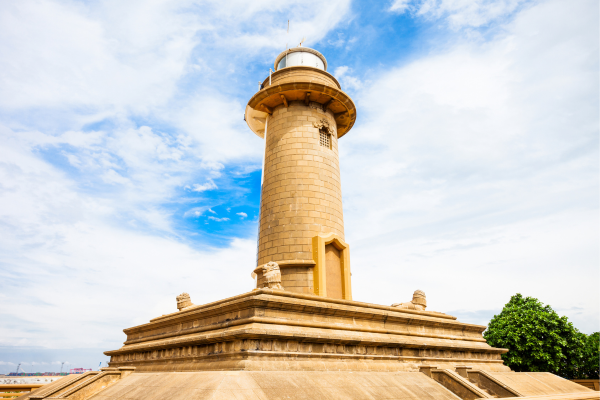
Colombo Light House
The history of Colombo dates back to ancient times. The city was a trading port and a center of commerce for many centuries, attracting merchants and traders from all over the world. It was ruled by various kingdoms and empires, including the Sinhalese kingdom of Kotte, the Portuguese, Dutch, and British colonial powers, before finally gaining independence in 1948.
During the Portuguese and Dutch colonial periods, Colombo grew in importance as a commercial center, with the port serving as a hub for trade between Asia and Europe. The city also played a significant role in the spread of Christianity in Sri Lanka, with many churches built during this period.
Under British rule, Colombo became the capital of Ceylon (now Sri Lanka) and was transformed into a modern city with a well-planned infrastructure, including the construction of the Colombo Harbour and the establishment of many government offices and institutions.
In the post-independence period, Colombo continued to develop and modernize, becoming an important hub for business, politics, and culture in Sri Lanka. Despite a long and complex history marked by various rulers and colonizers, Colombo has emerged as a vibrant and dynamic city that reflects the diverse influences of its past.
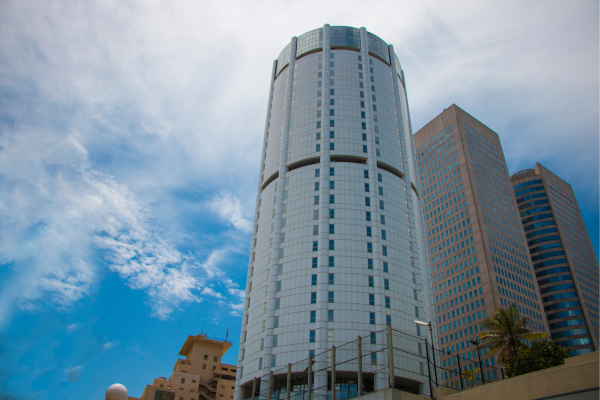
world trade center & Bank of Ceylon Buildings
Colombo is located on the west coast of Sri Lanka, bordering the Indian Ocean. The city covers an area of approximately 37 square kilometers and is situated at an altitude of 1 meter above sea level.
The Kelani River flows through the city, dividing it into two parts: Colombo North and Colombo South. The city’s coastline extends for approximately 15 kilometers, with several beaches and promenades, including the popular Galle Face Green.
Colombo is surrounded by several suburbs and satellite towns, including Dehiwala-Mount Lavinia to the south, Kolonnawa to the east, and Kaduwela to the northeast. The city is well-connected to other parts of the country through a network of highways, railways, and air transport.
The climate in Colombo is tropical, with high temperatures and humidity throughout the year. The monsoon season brings heavy rains from May to September, while the dry season from December to March is the best time to visit the city. Despite the challenges posed by the climate and geography, Colombo has emerged as a vibrant and thriving city, attracting visitors and residents from around the world.
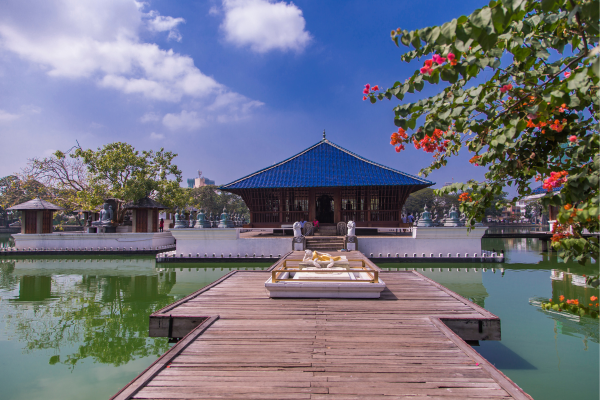
Gangaramaya Temple
The city limits of Colombo are defined by the Colombo Municipal Council, which is the local government authority responsible for managing the city. The current city limits cover an area of approximately 37 square kilometers, and include the following administrative divisions:
- Colombo 1: Fort
- Colombo 2: Slave Island
- Colombo 3: Kollupitiya
- Colombo 4: Bambalapitiya
- Colombo 5: Havelock Town
- Colombo 6: Wellawatte
- Colombo 7: Cinnamon Gardens
- Colombo 8: Borella
- Colombo 9: Dematagoda
- Colombo 10: Maradana
- Colombo 11: Pettah
These administrative divisions are further divided into smaller units known as wards, each with its own elected representative who serves on the Colombo Municipal Council. The city limits of Colombo have expanded over the years, reflecting the city’s growth and development, and the Colombo Municipal Council continues to manage and oversee the city’s infrastructure, services, and development.
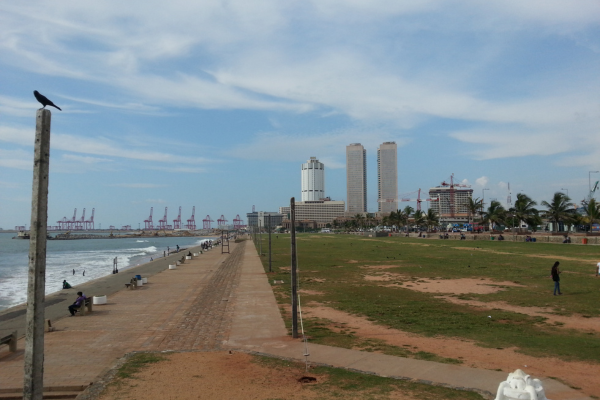
Galle Face Green
Colombo is home to a variety of landmarks that showcase the city’s history, culture, and architecture. Here are some of the most notable landmarks in Colombo:
- Galle Face Green: A popular seaside promenade that stretches for about 5 kilometers, offering stunning views of the Indian Ocean and plenty of space for relaxation and recreation.
- Colombo Fort: The historic center of Colombo, which includes many colonial-era buildings, such as the Dutch Hospital and the Old Colombo Lighthouse.
- Gangaramaya Temple: A Buddhist temple and cultural center that features an eclectic mix of architecture and art from Sri Lanka, China, Thailand, and India.
- Independence Memorial Hall: A monument and museum that celebrates Sri Lanka’s independence from British rule in 1948.
- National Museum of Colombo: The largest museum in Sri Lanka, with a collection of over 100,000 artifacts and exhibits that showcase the country’s rich history and culture.
- Old Parliament Building: A colonial-era building that once housed the Parliament of Sri Lanka, and now serves as the Presidential Secretariat.
- Beira Lake: A scenic lake located in the heart of Colombo, surrounded by parks and gardens, and home to many species of fish and birds.
- Viharamahadevi Park: A large public park named after Queen Viharamahadevi, with a statue of the queen and many trees, gardens, and walking paths.
- Jami Ul-Alfar Mosque: A striking mosque in the heart of Pettah, known for its red-and-white striped brickwork and unique architecture.
These landmarks are just a few of the many attractions that Colombo has to offer, reflecting the city’s rich history, cultural diversity, and natural beauty.
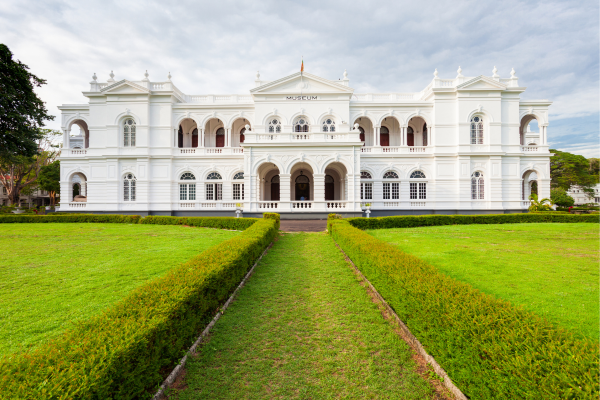
National Museum of Colombo
Colombo is famous for a variety of reasons, including:
- History and Culture: Colombo is one of the oldest cities in Sri Lanka, with a rich history and diverse cultural heritage that is reflected in its architecture, landmarks, and museums. The city has been influenced by various civilizations over the centuries, including the Portuguese, Dutch, and British, and has a unique blend of traditions and customs.
- Trade and Commerce: Colombo is the commercial capital of Sri Lanka, and a major hub for trade and commerce in the region. The city has a busy port, international airport, and a well-developed infrastructure that supports a range of industries, including tourism, textiles, and technology.
- Food and Drink: Colombo is renowned for its diverse and delicious cuisine, with a range of local and international options that cater to all tastes and budgets. The city is famous for its street food, seafood, and curries, as well as its tea and coffee culture.
- Nature and Wildlife: Colombo is surrounded by natural beauty, with lush greenery, beaches, and wildlife sanctuaries that attract visitors from around the world. The city is home to several parks and gardens, including the Viharamahadevi Park, and is within easy reach of national parks and nature reserves, such as the Sinharaja Forest Reserve and Yala National Park.
Overall, Colombo is famous for its rich history, cultural diversity, economic importance, culinary delights, and natural beauty, making it a popular destination for tourists, business travelers, and locals alike.
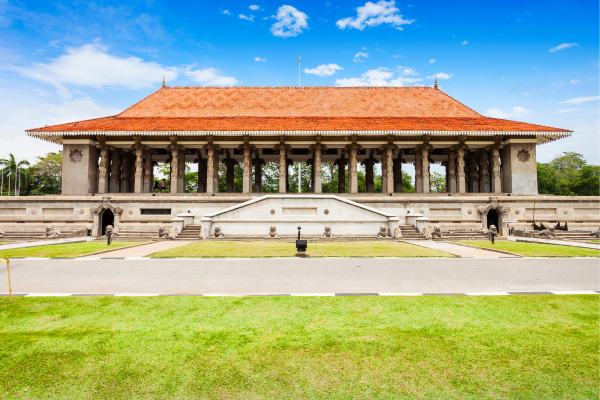
Independence Memorial Hall
Colombo has many interesting places to visit. Here are some popular attractions that you may want to consider visiting:
- Gangaramaya Temple – A historic Buddhist temple with stunning architecture and a museum with interesting artifacts.
- Independence Memorial Hall – A monument built to commemorate Sri Lanka’s independence from British colonial rule in 1948.
- Galle Face Green – A seaside promenade with a beautiful view of the Indian Ocean.
- National Museum – A museum with an impressive collection of artifacts from Sri Lanka’s ancient and colonial past.
- Viharamahadevi Park – A sprawling park with a statue of Queen Viharamahadevi, as well as a children’s playground and a lake.
- Pettah Market – A bustling market with vendors selling a wide range of goods, including clothing, spices, and jewelry.
- Beira Lake – A tranquil lake with a small island in the center and boat rides available for visitors.
- Colombo Dutch Museum – A museum housed in a 17th-century Dutch colonial mansion, showcasing the history of Dutch colonization in Sri Lanka.
- Mount Lavinia Beach – A picturesque beach located just south of Colombo, perfect for a day trip or a relaxing evening.
- Colombo Fort – A historic fort built by the Portuguese in the 16th century, now home to government offices and a bustling commercial district.







